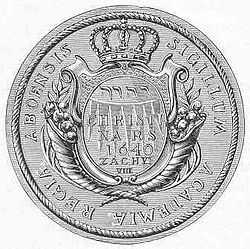Royal Academy of Turku

The Royal Academy of Turku (Swedish: Kungliga Akademin i Åbo or Åbo Kungliga Akademi, Latin: Regia Academia Aboensis, Finnish: Turun akatemia) was the first university in Finland, and the only university in present-day Finland to be founded when it was still a part of Sweden. In 1809, after Finland became a Grand Duchy under the suzerainty of the Russian Tzar, it was renamed the Imperial Academy of Turku. In 1828 the institution was moved from Turku after the Great Fire to Helsinki, in line with the relocation of the Grand Duchy's capital, and was finally named the University of Helsinki when Finland became a sovereign nation-state in 1917.
The academy was founded in 1640 by Queen Christina of Sweden at the proposal of Count Per Brahe on base of Åbo Cathedral School (f. 1276). It was the Sweden's third university following Uppsala University, founded in 1477, and the Academia Gustaviana (now the University of Tartu in Estonia), founded in 1632. Among its alumni are Johannes Palmberg, author of the 17th-century Swedish textbook in botany Serta Florea Svecana.
The first printing shop in Finland was established at the academy in 1642. The printer was Peder Walde.
Turku (in Swedish known as Åbo) was the largest city in Finland and among the three largest in Sweden, while under Swedish sovereignty. In 1809 Finland was ceded to Russia and the capital of the new Grand Duchy of Finland was relocated to Helsinki in 1812, as Turku was regarded as being too remote from Saint Petersburg — and too near to Stockholm. As a result of the Great Fire of Turku of 1827, which devastated most of the city, the government offices that had remained were finally moved to the new capital, and so also was the university. It continued in Helsinki, first as the Imperial Alexander University in Finland, and, following Finland's independence in 1917, as the University of Helsinki.
Both the Swedish-speaking Åbo Akademi University (1918) and the Finnish speaking University of Turku (1920) are much newer entities in Turku, although they claim an academic tradition at the location since the 17th century, in spite of a break for almost a century.
See also
- List of early modern universities in Europe
- List of universities in Finland (present-day universities)
- History of Finland
- History of Sweden